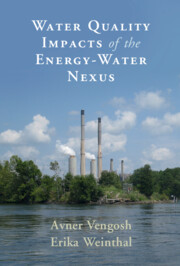Book contents
- Water Quality Impacts of the Energy-Water Nexus
- Water Quality Impacts of the Energy-Water Nexus
- Copyright page
- Contents
- Acknowledgments
- 1 Introduction
- 2 Quantification of Energy and Water Flows
- 3 The Coal–Water Nexus
- 4 Conventional Crude Oil and Tight Oil–Water Nexus
- 5 Conventional and Unconventional Natural Gas–Water Nexus
- 6 Integration
- References
- Index
- Plate Section (PDF Only)
4 - Conventional Crude Oil and Tight Oil–Water Nexus
Published online by Cambridge University Press: 03 February 2022
- Water Quality Impacts of the Energy-Water Nexus
- Water Quality Impacts of the Energy-Water Nexus
- Copyright page
- Contents
- Acknowledgments
- 1 Introduction
- 2 Quantification of Energy and Water Flows
- 3 The Coal–Water Nexus
- 4 Conventional Crude Oil and Tight Oil–Water Nexus
- 5 Conventional and Unconventional Natural Gas–Water Nexus
- 6 Integration
- References
- Index
- Plate Section (PDF Only)
Summary
The chapter explores the water–energy nexus associated with conventional and unconventional (tight) oil exploration, provides water-intensity values associated with conventional oil drilling and enhanced oil recovery, and hydraulic fracturing. The chapter explores the source, volume, geochemistry, and water quality issues of conventional and unconventional oil produced water. The chapter explains the nature and origins of oil field brines, as well as the inorganic (salts, metals, and naturally occurring radioactive elements) and organic constituents. The chapter evaluates the impact of oil produced water on the environment, as well as the ability to reuse oil produced water for beneficial use. The chapter explores the water use and quality associated with oil sand extraction and processing and possible environmental effects as well as oil refining. The chapter evaluates the impact of oil spills on water resources. The chapter examines policy mechanisms that influence the extent of environmental externalities that have emerged from oil production and exploration, including government regulations, forms of corporate society responsibility, and types of contracts.
Keywords
- Type
- Chapter
- Information
- Water Quality Impacts of the Energy-Water Nexus , pp. 81 - 135Publisher: Cambridge University PressPrint publication year: 2022

